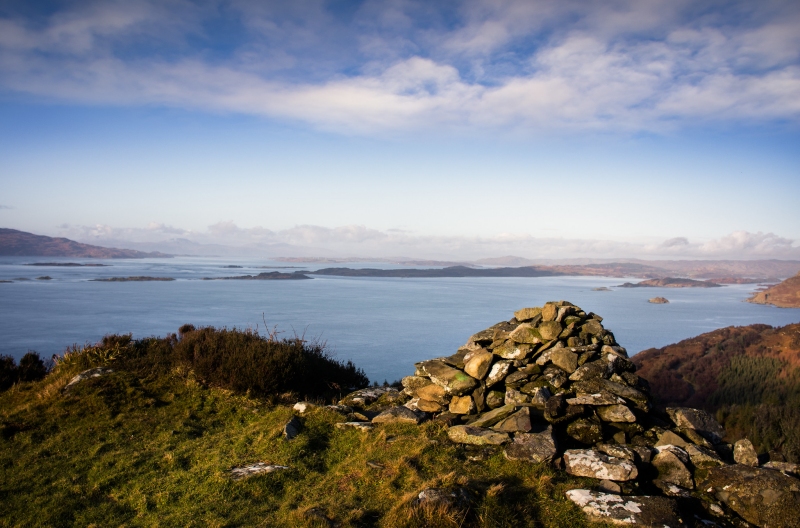
Motto: Je Suis Prest (I Am Ready)
Historic Seat: Castle Dounie
District: Aberdeenshire, Inverness-shire
Associated Surnames: Cowie, Frew, Frissell, Frizell, MacGruer, MacImmey, MacKim, MacKimmie, MacShimes, MacSimon, Oliver, Sim, Simon, Syme, Symon
Associated Tartans:
Early Fraser Genealogy and History:
(Excerpt from "The Scottish Clans and Their Tartans", James Grant, 1906)
The Frasers are not of original Gaelic descent, but their name yields to few in Scotland for antiquity, and the time of their settling there is uncertain, though MacKenzie and Martin say they are descended from Pierre Frasier, who came to Scotland in 790. Be that as it may, people of the surname had considerable possessions in the south of Scotland after the death of Malcolm III.
Gilbert of Fraser is witness of a charter to the Monastery of Coldstream in the reign of Alexander I, anno 1009. Simon Fraser made many donations to the religious at Kelso in the time of David I. In the time of William the Lion, Bernard Fraser made a donation to Newbattle Abbey, anno 1178; and in the time of Alexander II, we read of Gilbert Fraser, vice comes de Trauhair, Bernard Fraser of Drem, and Thomas Fraser, 1225 et 1236. But it is difficult to connect these Frasers with each other, though doubtless they came of a common stock.
Sir Simon Fraser of Oliver Castle held a high place among the Magnates Scotiae in the troubles after the death of Alexander III. He won the three battles of Roslin in one day in 1303, and was basely put to death in London by Edward I; but his brother Alexander carried on the line of the family, and seems to have been the first Fraser who possessed estates in the Highlands. He was killed at the battle of Dupplin1. His grandson fell at Halidon Hill2 in 1333, leaving a son Hugh, first designed of Lovat, and progenitor of the Fraser of Knock and Foyers.
Hugh, sixth of the family, and second of Lovat, was made a Baron by James I about 1460; Thomas, second Lord, lost his son, the Master, at the battle of Flodden3; and Hugh, third Lord, was slain in a battle with the MacRonalds near Lochlochy in 1544, when they and the Frasers fought with such rancour that only ten men a-side survived. Hugh, ninth Lord of this line, dying without male issue, Simon Fraser, younger, of Beaufort began to style himself Master of Lovat, while his father took possession of the estate and honours of the family; but eventually, after many discreditable acts, and having letters of fire and sword issued against the whole clan, Simon fled to France about 1698, while his father became Lord Lovat.
Simon eventually became eleventh Lord Lovat, and his character and fate in 17464 are prominent features in the civil war of that calamitous time. His title was attainted5.
It was revived as a British peerage in 1837, when Thomas Fraser of Streichen and Lovat was created Lord Lovat, and became twenty-first chief in succession from Simon Fraser, though the title has been subject to some dispute.
Lord Lovat died in 1875, and was succeeded by his son Simon, who died in 1887, leaving Simon, present Lord Lovat.
The Frasers, Baronets of Ledclune, descend from Hugh, first Lord Lovat through Alexander, his second son, and are now represented by Sir Keith, fifth Baronet.
The Frasers of Saltoun are descended from William, second son of Sir Alexander Fraser of that Ilk, taken at the battle of Methven in 1308. William obtained from his father the Thanedom of Cowie and lands of Ashintully. He was slain at the battle of Durham in 1346. His son Alexander fought with valour at Otterburn6 in 1388. His grandson William, designed Dominus de Philorth, died in 1441.
Sir Alexander, fourth of this line, Baron of Philorth, accompanied James, Earl of Douglas to the great jubilee at Rome in 1450; and Alexander, fifth Baron of Philorth, was in arms for James III at Sauchiburn. Sir Alexander, ninth of this family, raised a regiment for the King's service and fought at Worcester7; and on the death of his cousin, Lord Saltoun, without issue in 1669, he was served heir of line to George, Lord Abernethy of Saltoun, his grandfather, and his descendant Alexander is now eighteenth Lord Saltoun.
(End excerpt)
Next page: Clan Gordon
Footnotes:
1 The Battle of Dupplin Moor (1332): The Battle of Dupplin Moor was fought 10-11 August, 1332, near Perth, Scotland between supporters of the infant David II, son of Robert the Bruce, and rebels supporting the Baliol claim to the throne. It was a significant battle of the Second War of Scottish Independence. Read more about the Battle of Dupplin Moor at Wikipedia.
2 The Battle of Halidon Hill (1333): The Battle of Halidon Hill was fought on 19 July 1333 during the Second War of Scottish Independence between Scottish forces led by Sir Archibald Douglas and the English forces of King Edward III of England, near Berwick, a disputed territory in the borderlands between England and Scotland. Read more about the Battle of Halidon Hill at Wikipedia.
3 The Battle of Flodden (1513): The Battle of Flodden Field was fought on 9 September 1513, in Northumberland England between an army of Scots under King James IV and an English army commanded by the Earl of Surrey. Read more about the Battle of Flodden at Wikipedia.
4 1746: Simon Fraser, 11th Lord Lovat was among the Highlanders defeated at the Battle of Culloden on 16 April 1746, and convicted of treason against the Crown. He was sentenced to death, and beheaded. Read more about Simon Fraser, Lord Lovat at Wikipedia.
5 Attainted: Stripped of titles, hereditary rights, and/or possessions.
6 The Battle of Otterburn (1388): The Battle of Otterburn was fought in August 1388 (conflicting sources state both the 5 August and the 19 of August) in Northumberland, England. It was fought between invading Scots, led by James, 2nd Earl of Douglas, and the border forces of England. Read more about the Battle of Otterburn at Wikipedia.
7 The Battle of Worcester (1651): The Battle of Worcester was fought on 3 September 1651 at Worcester, England and was the final battle of the English Civil War. Cromwell's army defeated King Charles II's army, of whom the vast majority were Scottish. Read more about the Battle of Worcester at Wikipedia.
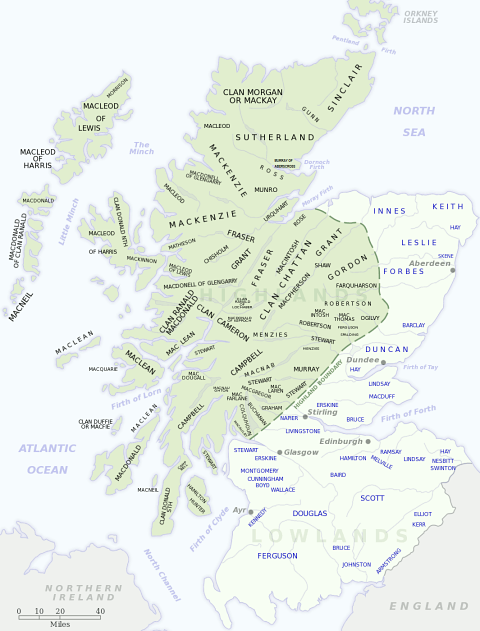
Distribution of Scottish clans and families
View larger map at Wikimedia Commons
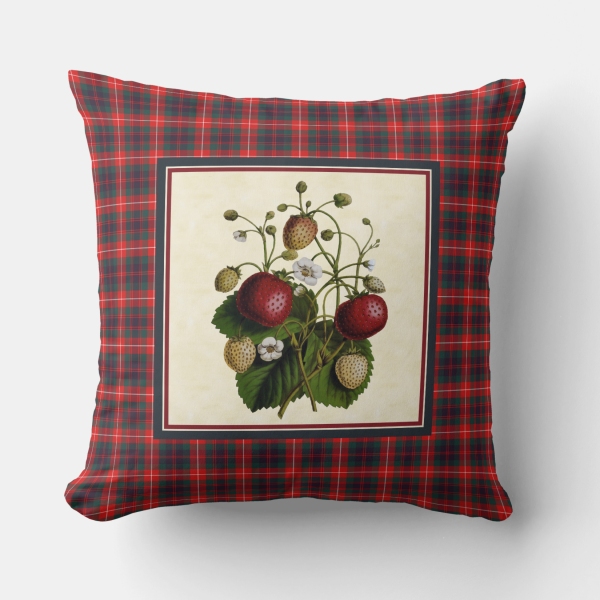
Browse the Clan Fraser of Lovat Tartan Collection with home decor, personal accessories, crafting, paper products, and more.
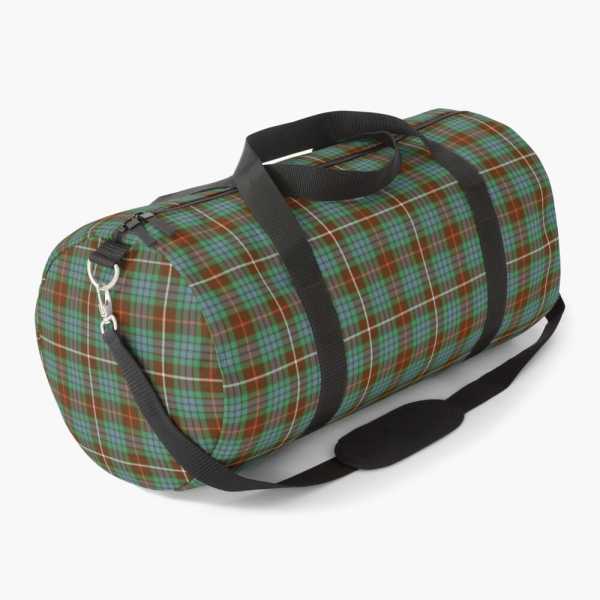
Browse the Clan Fraser Hunting Tartan Collection with clothing, home decor, accessories, electronics cases, and more.
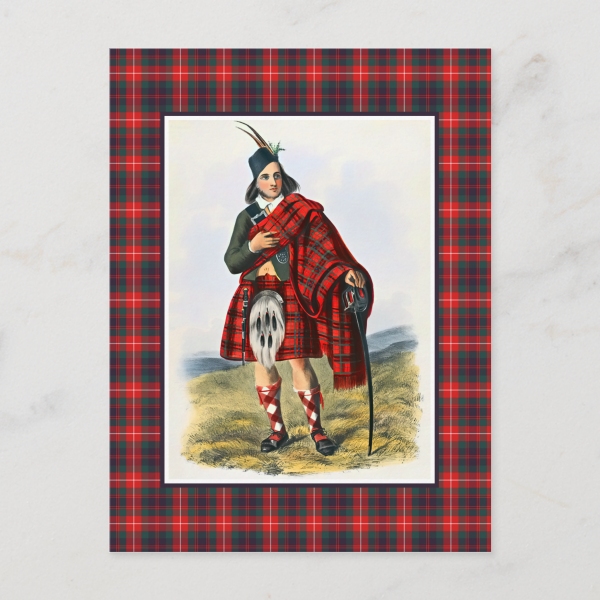
Clan Fraser Postcard: Digitally cleaned and enhanced vintage illustration with tartan frame.